Winter Solstice Christmas Traditions and Connections
The winter solstice marks the longest night and shortest day of the year, and throughout history, it has been celebrated in various cultures as a time of renewal and rebirth. The Christmas holiday, which falls shortly after the solstice, has its roots in pagan traditions that date back centuries. Blending these two celebrations, Winter Solstice and Christmas has become a time-honored tradition around the world.
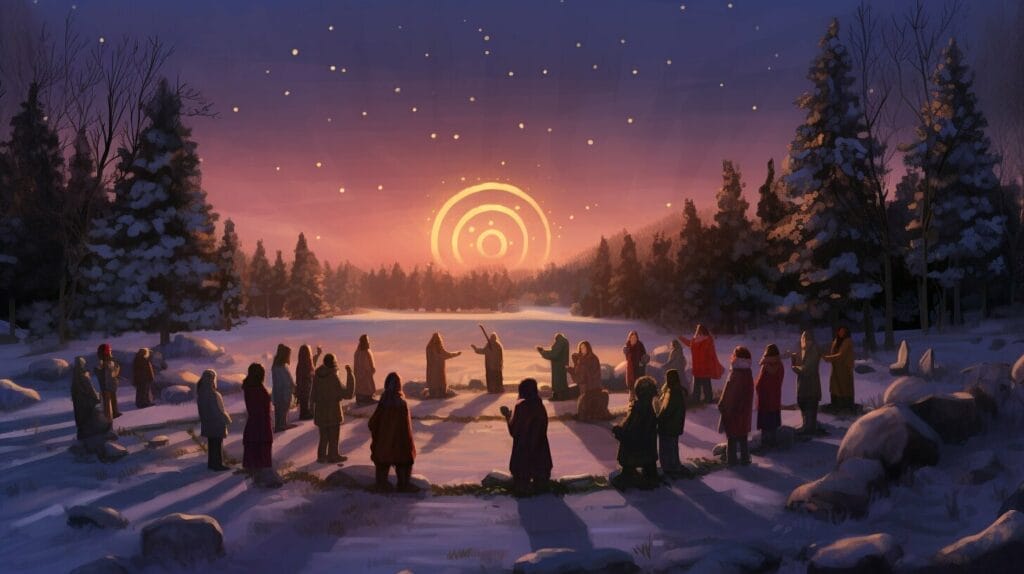
In this comprehensive guide, we will explore the fascinating blend of Winter Solstice and Christmas traditions and delve into the historical and cultural context surrounding these time-honored celebrations. Learn about the origins of Winter Solstice and Christmas, including the influence of pagan winter festivals such as Saturnalia, Norse Yule traditions, and the practices of the ancient Druids.
We shall also explore the symbols associated with Winter Solstice and their significance, including the mystical meaning of mistletoe, the symbolism of holly and ivy, and the connection between the Christmas star and the solstice. Discover the various Winter Solstice traditions and celebrations that have been practiced throughout history, including the burning of the Yule log, candlelight processions, and the lighting of solstice bonfires.
Whether you celebrate Winter Solstice, Christmas, or both, this guide will provide insights into the rich traditions and shared values that unite these joyous celebrations.
Quick Summary
- Winter Solstice Christmas is a blend of two time-honored celebrations with deep historical and cultural roots.
- The solstice marks the longest night and shortest day of the year and has been celebrated in many cultures as a time of renewal and rebirth.
- Christmas has its roots in pagan traditions such as Saturnalia, Norse Yule, and ancient Druid practices.
- Winter Solstice symbols include mistletoe, holly, ivy, and the Christmas star.
- Winter Solstice traditions include the burning of the Yule log, candlelight processions, and the lighting of solstice bonfires.
The Origins of Winter Solstice and Christmas
Winter Solstice and Christmas have their origins in ancient pagan winter festivals and practices. These celebrations were marked by feasting, gift-giving, and rituals to honor the balance of light and darkness as the days grew shorter and the nights longer. Among the most famous pagan winter festivals were the Saturnalia festival in ancient Rome, the Norse Yule traditions, and the practices of the ancient Druids.
The Saturnalia festival was a week-long celebration that began on December 17th. It was dedicated to the god Saturn and involved gift-giving, feasting, and the lighting of candles and lamps. The festival also marked the winter solstice and the return of longer days.
The Norse Yule traditions, which originated in Scandinavia, involved feasting and sacrifices to honor the gods and goddesses. The Yule log, a large piece of wood lit on the first day of the festival, symbolized the return of light and warmth.
The ancient Druids celebrated the winter solstice as a time of rebirth and renewal. They believed that on this day, the sun stood still for twelve days before beginning its ascent once again. Druids gathered mistletoe, which was believed to have magical properties, and used it in rituals to ward off evil spirits and promote fertility.
As Christianity spread throughout Europe, many of these pagan practices were absorbed into the new religion, including the celebration of Christmas. The Church chose December 25th as the date to celebrate the birth of Jesus Christ, as it coincided with the pagan winter festivals, making it more accessible and acceptable to converts.
Today, Winter Solstice and Christmas are celebrated in many different ways around the world, often incorporating both pagan and Christian traditions. Understanding the historical and cultural context of these celebrations can help us appreciate the rich tapestry of human traditions and beliefs.
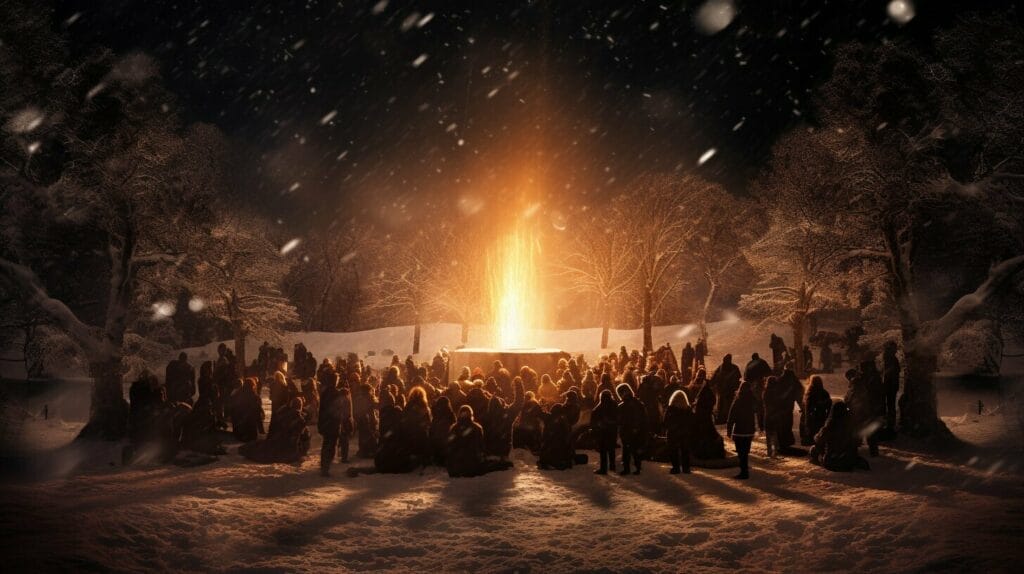
Over the millennia, winter solstice celebrations have undergone significant transformations, shaped by cultural, religious, and societal shifts. Historically, the solstice was deeply revered by many ancient civilizations. They held festivals and rituals to honor the rebirth of the sun and the impending return of longer days.
With the advent of Christianity, many of these pagan traditions were incorporated into Christmas celebrations. In modern times, the direct observance of the winter solstice has waned in many cultures, overshadowed by commercialized festive holidays. While some traditional and neo-pagan groups still honor the solstice with specific rituals, the broader societal emphasis has largely shifted to more contemporary holiday festivities.
Winter Solstice Christmas Symbols
Winter Solstice is a time of deep spiritual significance, marked by a range of symbols that hold rich meaning and reflect our connection to the natural world. Some of the most well-known Winter Solstice symbols include:
| Symbol | Significance |
|---|---|
| Mistletoe | Mistletoe has long been seen as a symbol of fertility and vitality, representing the promise of new life even in the depths of winter. People often hang it in doorways and kiss underneath it, in hopes of finding love in the coming year. |
| Holly and Ivy | Holly and ivy are also traditional symbols of Winter Solstice, representing the ongoing cycle of life and the promise of new growth to come. Holly is believed to protect against negative energies and bring good luck, while ivy is seen as a sign of eternal life and resurrection. |
| Christmas Star | The Christmas star is a symbol of the guiding light during the darkest time of the year. Many believe that it represents the star that led the Wise Men to the birthplace of Jesus Christ. |
These symbols have evolved over time and are deeply intertwined with the cultural traditions of Winter Solstice and Christmas. They remind us of the cyclical nature of life, the power of love and hope, and the importance of staying connected to the natural world even in the depths of winter.
As you can see, mistletoe has been an important Winter Solstice symbol for centuries. It is often seen as a symbol of fertility, as it is an evergreen plant that produces white berries during the darkest time of the year. The Druids believed that mistletoe had mystical healing powers and would use it in their Winter Solstice rituals.
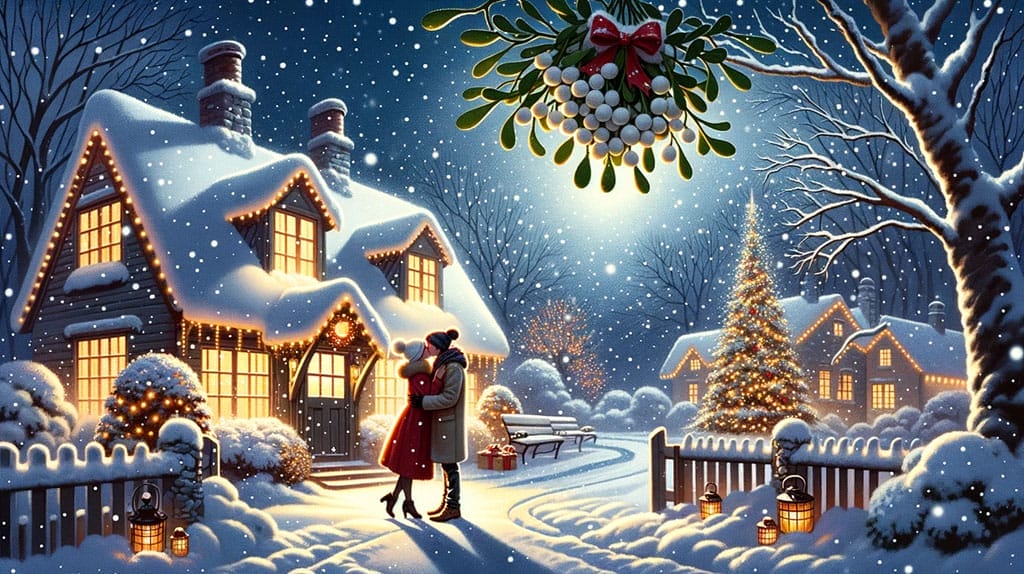
The tradition of kissing under the mistletoe is thought to have originated with the Norse, who believed that it had the power to ward off evil spirits. Today, we continue to hang mistletoe in our homes during the holiday season and use it as a symbol of love, warmth, and connection.
“The mistletoe is still hung up in farm-houses and kitchens at Christmas, and the young men have the privilege of kissing the girls under it, plucking each time a berry from the bush. When the berries are all plucked the privilege ceases.”
Winter Solstice is a time of reflection, renewal, and connection. By embracing the symbols and traditions associated with this ancient celebration, you can tap into a deep well of spiritual wisdom and connect with the natural world in a profound way.
The Origins of the Christmas Tree
You may be familiar with the modern-day tradition of decorating a tree during the Christmas season, but do you know the origins of this beloved practice?
The use of evergreen trees as a symbol of life and rebirth dates back to ancient pagan cultures. During the winter months, when most trees lost their leaves and appeared lifeless, evergreen trees remained vibrant and green, serving as a reminder of the promise of spring and new beginnings.
The specific use of evergreen trees as part of Christmas celebrations can be traced back to medieval Germany. It is believed that the first person to bring a decorated tree into their home for Christmas was Martin Luther, the 16th-century Protestant reformer. According to legend, while walking through a forest one winter evening, Luther was struck by the beauty of the stars twinkling through the tree branches. To recreate the sight for his family, he cut down a small evergreen tree and decorated it with candles, symbolizing the beauty of Christ’s birth.
The tradition of decorating Christmas trees quickly spread throughout Europe, with various decorations added over time. In the 1700s, German settlers brought the practice to America, where it became popularized in the 1800s with the introduction of electric lights and more elaborate decorations.
Today, the Christmas tree remains a centerpiece of holiday decorations in many households around the world, reflecting the enduring tradition and symbolism of rebirth and hope during the winter season.
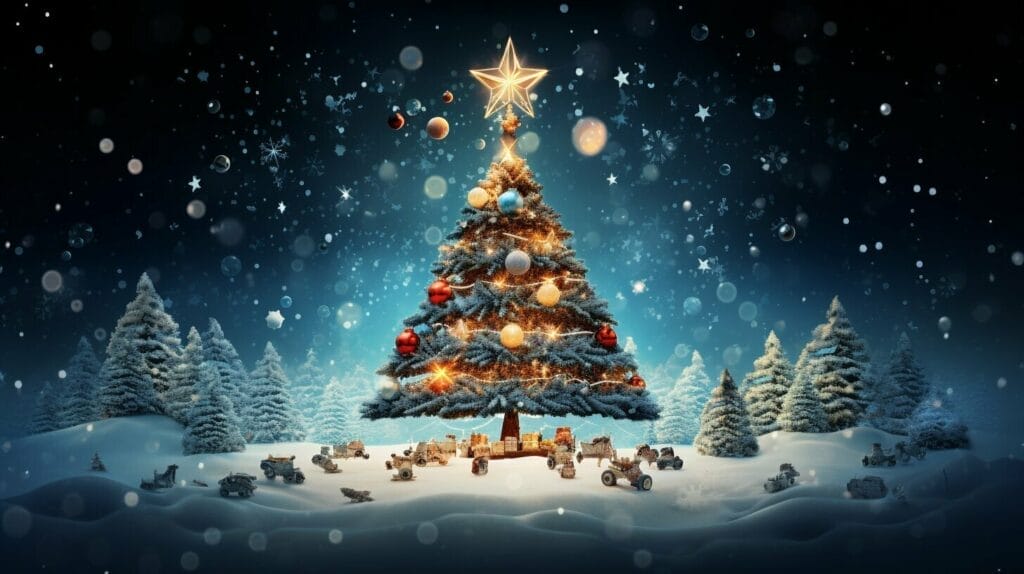
The Winter Solstice is a time of reflection, renewal, and celebration. As the longest night of the year, it marks the end of darkness and the beginning of the return of the light. Throughout history, people have honored this auspicious occasion with a variety of traditions and celebrations.
The Yule Log
One of the most well-known Winter Solstice traditions is the burning of the Yule log. The Yule log, typically made of oak, is burned in a hearth to symbolize the returning sun. As the log burns, people gather around it to sing songs, tell stories, and share in the warmth and light it provides. This tradition dates back to ancient Norse and Celtic cultures.
Candlelight processions are another popular Winter Solstice tradition. These processions involve walking with lit candles to symbolize the return of the light and the hope it brings. In some cultures, these processions are done on the evening of December 21st, while in others they are performed on Christmas Eve.
Solstice bonfires are also a common way to celebrate the returning sun. These outdoor fires are typically lit at sunset on the Winter Solstice and burned throughout the night. They symbolize the triumph of light over darkness and are a time of feasting, dancing, and revelry.

Other Winter Solstice traditions and celebrations include bringing evergreen branches into the home, decorating with holly and ivy, and sharing a meal with loved ones. These traditions remind us of the cyclical nature of life and the power of renewal and hope that comes with the changing of the seasons.
Rebirth of the Sun Celebrations
December 21st is a significant date for many cultures and religions around the world. Historically, this day marks the winter solstice, the shortest day and longest night of the year in the Northern Hemisphere. The rebirth of the sun is celebrated on this day, as it marks the gradual return of light and hope, symbolizing the end of darkness and the renewal of life.
Rebirth of the sun celebrations vary around the world, but they commonly include lighting candles, lighting bonfires, and holding processions. In Scandinavia, people celebrate “Yule” and light candles on a wreath on the advent Sundays leading up to December 21st. The ancient Romans celebrated “Saturnalia” with feasting, gift-giving, and lighting candles.
The ancient Druids celebrated the winter solstice by lighting fires on hilltops, and the Celtic festival of “Alban Arthuan” was centered around the lighting of the “Yule log,” which was lit from the remains of the previous year’s log. Similarly, the Anglo-Saxons celebrated “Yule” by lighting and burning a large log.
December 21 Traditions
Some traditions associated with December 21st include meditation, reflection, and setting intentions for the future. Many people believe that the power of the winter solstice can be harnessed to bring forth positive change in their lives and the world around them.
December 21st is also a time to honor the cycles of nature and the interconnectedness of all living things. It is a time to celebrate the beauty of the earth and the importance of preserving it for future generations.
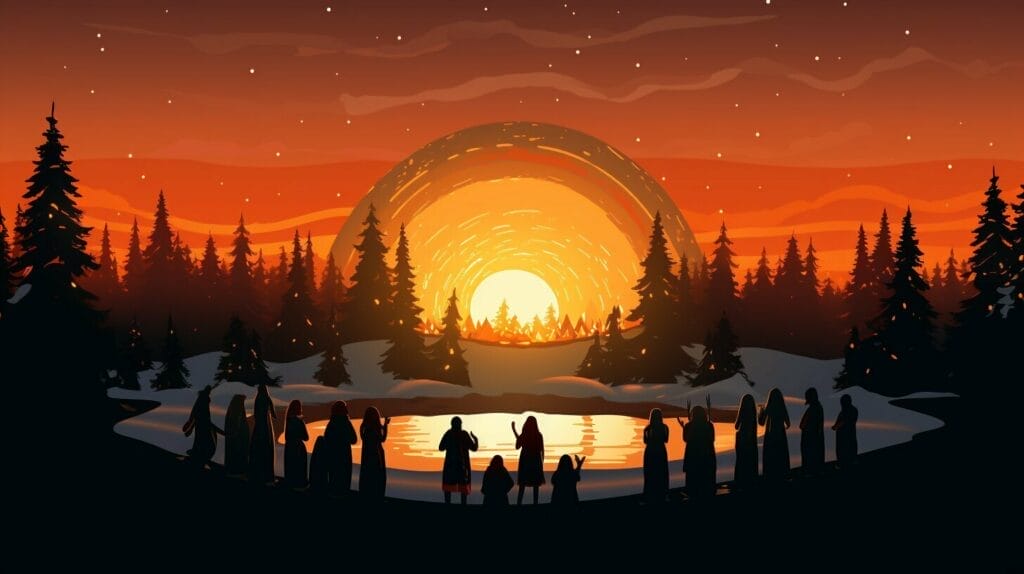
As you celebrate the rebirth of the sun this December 21st, take time to appreciate the significance of this day and the traditions that have been passed down through generations. Whether you light candles, hold a bonfire, or simply meditate and reflect on the cycles of life, honor the power of the winter solstice and the light it brings to the darkest time of the year.
Advent Season and Feast of the Twelve Nights
The Advent season is a time of preparation for Christmas that begins four Sundays before December 25th. It is a time of reflection and spiritual renewal, as Christians eagerly await the celebration of the birth of Jesus Christ. During this time, you can find churches and homes adorned with Advent wreaths, which consist of four candles representing hope, peace, joy, and love. Each Sunday, a new candle is lit, culminating in the lighting of the center Christ candle on Christmas Day.
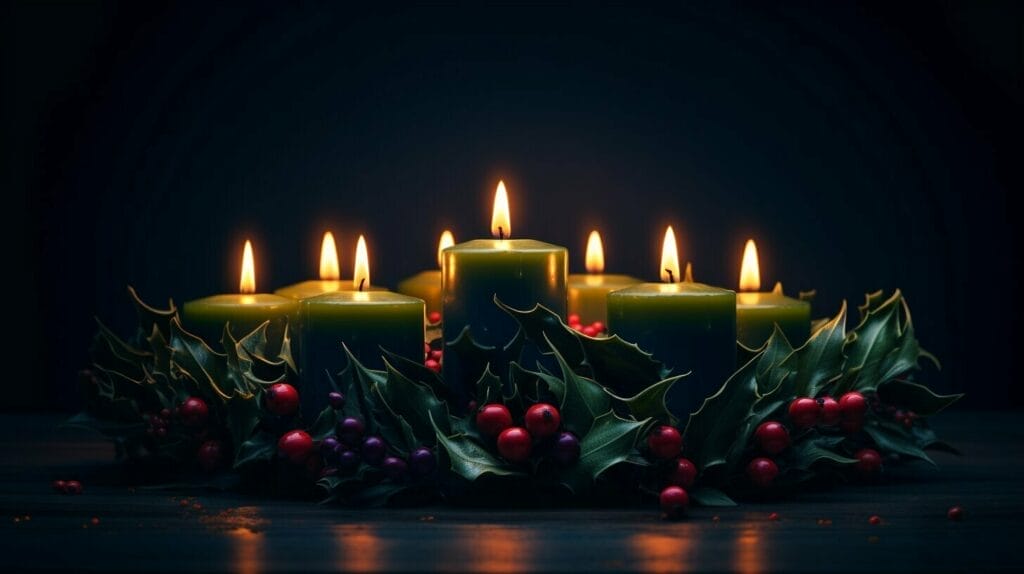
“For Christians, the Advent season is a time of reflection and spiritual renewal, as they eagerly await the celebration of the birth of Jesus Christ.”
The Feast of the Twelve Nights, also known as Twelvetide, is a Christian tradition that originated in Europe and is celebrated from Christmas Day to January 5th. It is a time of feasting and celebration, with each of the twelve nights representing one month of the upcoming year. Each night, a different dish is served and families participate in various activities, such as singing carols and telling stories.
During this time, it is also customary to exchange gifts, with many cultures associating the tradition with the gifts given by the Wise Men to the baby Jesus. The Feast of the Twelve Nights is a time to come together with loved ones, reflect on the past year, and look forward to the new one with hope and excitement.
Winter Solstice Christmas Around the World
Winter Solstice Christmas is a time of celebration and togetherness, with traditions that span the globe. From Europe to Asia, North America to South America, people come together to mark the longest night of the year and the return of the sun. Midwinter festivities are a way to connect with family and friends, to reflect on the past year and to look forward to the year ahead.
In Japan, Winter Solstice is known as Toji, and it is celebrated with yuzu-scented baths and traditional foods meant to ward off colds and flu. In Australia, the summer season is in full swing, so the holiday is celebrated with beach parties and barbecues. In China, Dongzhi marks the end of the harvest season and the arrival of longer days, celebrated with family reunions and the making of tangyuan dumplings.
In Europe, many countries celebrate St. Lucia’s Day on December 13th, a holiday honoring the patron saint of light. In Italy, the Feast of the Seven Fishes is a beloved tradition celebrated on Christmas Eve, with a delicious seafood feast. In Scandinavia, the ancient festival of Jul (Yule) is celebrated with bonfires, feasting, and the lighting of candles.
South American countries like Brazil and Mexico celebrate the holiday season with colorful street festivals and parades. In Brazil, the Festa de Iemanja is a celebration of the goddess of the sea, while in Mexico, the holiday season is marked by the Posadas, a series of processions and reenactments of Mary and Joseph seeking shelter.
No matter where you are in the world, Winter Solstice Christmas is a time of joy and connection. By celebrating the traditions of our ancestors and embracing the diversity of global celebrations, we are reminded of our shared humanity and the power of community.

As we have explored throughout this guide, Winter Solstice Christmas is a time-honored celebration that unites people of different cultures and traditions across the globe. Whether you observe the rebirth of the sun, the Christian feast of Christmas, or the diverse midwinter festivities of other cultures, this time of year is one of hope, renewal, and togetherness.
By embracing the Winter Solstice Christmas connection, we can tap into the shared values and rich traditions that have been passed down through generations. We can come together with friends, family, and community to celebrate the warmth and light that we create amidst the darkest time of the year.
So this Winter Solstice Christmas, take a moment to appreciate the beauty of the season and the joy it brings. Light a candle, share a meal, or exchange gifts with loved ones. And remember that in doing so, you are participating in a tradition that has brought people together for centuries, a tradition that celebrates the enduring spirit of humanity and our connection to the natural world.
Let Winter Solstice Christmas be a reminder of all that is good and true, and let it inspire you to carry that spirit of hope and togetherness with you throughout the year. Together, we can embrace the Winter Solstice Christmas connection and create a brighter future for ourselves and for generations to come.
FAQ
What is the historical and cultural context of Winter Solstice Christmas traditions?
Winter Solstice Christmas traditions have deep roots in various historical and cultural contexts. They draw inspiration from pagan winter festivals like Saturnalia, Norse Yule traditions, and ancient Druid practices.
What are some symbols associated with Winter Solstice?
Winter Solstice is rich in symbolism. Mistletoe holds mystical significance, while holly and ivy symbolize eternal life and rebirth. The Christmas star is also connected to the solstice, representing hope and light.
How did the Christmas tree originate?
The Christmas tree has its origins in pagan traditions. It evolved from practices such as worshiping evergreen trees and bringing them indoors during winter solstice celebrations to symbolize life and fertility.
What are some Winter Solstice traditions and celebrations?
Winter Solstice traditions vary across cultures. Some examples include burning the Yule log, participating in candlelight processions, and lighting solstice bonfires to celebrate the return of light during the darkest time of the year.
What is the significance of December 21st in Winter Solstice celebrations?
December 21st marks the winter solstice, the shortest day and longest night of the year. Many celebrations focus on this date as it symbolizes the rebirth of the sun and the return of light and hope.
What are the Advent season and Feast of the Twelve Nights?
The Advent season is a Christian tradition leading up to Christmas, marked by a period of reflection and preparation. The Feast of the Twelve Nights bridges the gap between Winter Solstice and Christmas, celebrating the twelve nights following December 25th.
What are some customs and traditions associated with Christmas Eve?
Christmas Eve customs vary, but they often include festive activities like gift exchanges and family gatherings. Some religious observances may also take place, such as attending midnight mass or lighting candles in remembrance.
How is Winter Solstice Christmas celebrated around the world?
Winter Solstice Christmas is celebrated in diverse ways across different cultures and countries. Each society brings its unique traditions and customs to the midwinter festivities, creating a tapestry of shared joy and community spirit.
What is the connection between Winter Solstice and Christmas?
Winter Solstice and Christmas share a deep connection rooted in ancient traditions and the celebration of light and hope during the darkest time of the year. Both occasions emphasize the importance of coming together and celebrating life’s cyclical nature.




